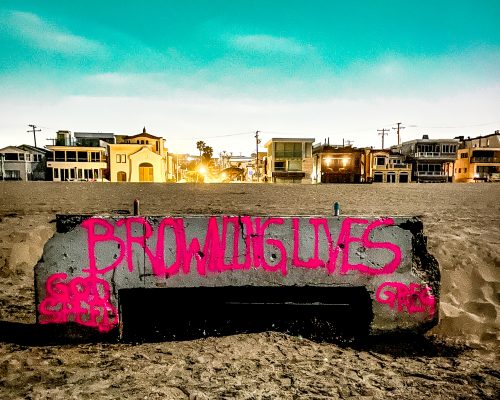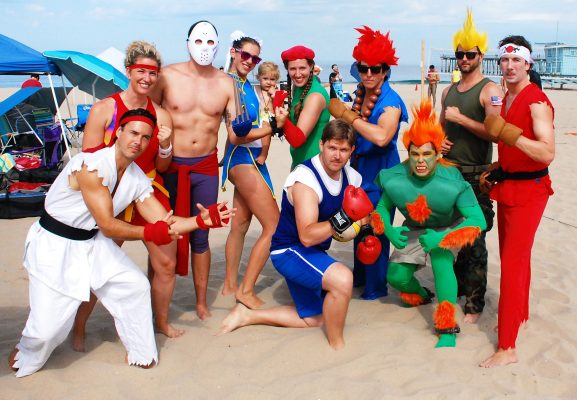Surfing near an oilfield carries some unique risks that surfers should be aware of.
This is because oil platforms and other structures can impact wave patterns, leading to dangerous surf conditions. Furthermore, pipelines and debris from oil platforms can create hazards for surfers.
So what should you do if you get into a surfing accident that was caused by an offshore oilfield?
How Oilfields Impact Waves and Increase Hazards
Offshore oil platforms and structures are large solid objects that can interfere with incoming swell patterns. And as waves pass around oil rigs, they can create complex and unstable types of waves.
Here are some of the hazardous wave conditions that oilfields often produce:
- Sidewash – When waves deflect off the pillars and legs of a platform, they bounce sideways. This creates areas of criss-crossing choppy waters.
- Backwash – Platform structures can reflect waves back on themselves, causing backwash. These double-up waves are steeper and can close out powerfully.
- Shifting peaks/troughs – The underwater infrastructure around oilfields changes constantly. This shifting seabed leads to moving sandbars, peaks, and troughs. Waves can change radically from one hour to the next.
- Boils/upwellings – Sometimes subsurface pipelines leak gases like methane, which bubble up unpredictably through the water column. Hitting these mid-wave can knock you off balance.
In addition to strange wave dynamics, oil platforms also accumulate debris. Lost tools, torn mooring lines, barrels, and building materials often end up in the lineup. These things can increase the risks of an accident.
So if you decide to surf near oil infrastructure, keep the risks in mind and stay alert!
What To Do If You’re Injured by Debris or Unsafe Waves
If you get injured from waves or debris around an oilfield, the most important thing is to make sure you stay safe from further harm.
Here’s a quick guide on what to do next:
- Get out of the impact zone – The first priority is paddling away from the hazard area if you’re able to. Other surfers may be headed for the same debris or boil that hit you already.
- Assess your injuries – Once clear, do a mental checklist of your condition. Note any bleeding, breathing issues, loss of balance, intense pain, etc. Stay as calm as possible.
- Call for help – If injured, make sure to signal to other surfers to call for emergency help. Whistle blasts, waving a bright shirt, or even an emergency beacon can work. Most lineups have an informal rescue process.
- Treat immediate issues – While help is on the way, do what you can to address any bleeding, etc. Even just keeping warm by huddling in your wetsuit can help. The first aid training many surfers get pays off here.
- Carefully head to shore – When able, gently ride a mushy white water wave or paddle in calmly. Hurrying can make neck/back injuries worse. Keep an eye out for other hazards washing your way too.
- Get checked out – Once on shore, get emergency responders to check you thoroughly. Adrenaline can hide subtle but serious issues in the moment. Better safe than sorry always applies.
Can You Hold Oil Companies Liable for Surf Injuries?
If an oilfield or pipeline caused your accident directly through negligence, it may be possible to hold the operating company financially liable. Essentially, you can file an oilfield injury lawsuit to help cover your medical costs and other losses.
However, legal experts say suing oil firms for surf incidents is extremely tough to prove unless there was:
- Active pipeline leakage – If you can document hitting an underwater gas boil that pipelines were actively leaking, you may establish legal responsibility.
- Mid-ocean platform debris – Where structures stand offshore, it’s the company’s duty to clean up surrounding hazards regularly. The evidence they failed to do so helps build a case.
- Hazardous infrastructure removal – There could be liability if hazards created directly by platform demolition or undersea pipe removal injure nearby surfers.
Without clear evidence like this though, don’t expect much legal traction. Marine liability laws still favor offshore operators in many regions, rightly or wrongly.
Even winning oilfield lawsuits takes immense time and money too. Complex legal actions easily take 2-5 years, with no guarantee a judge will rule in your favor. And out-of-court legal settlements typically still mean accepting compensation cents on the dollar, unfortunately.
So what many veteran oilfield surfers recommend is preparing for risks, not planning for legal paydays. Being rescue trained, wearing helmets, using emergency gear, and simply avoiding dubious setups is smarter in the long run.
Practical Tips for Surfing Near Oil Infrastructure Safely
While oilfields introduce all kinds of hazards, they also create incredible world-class waves. So if prepared properly, the tradeoffs of surfing industrial zones can be worthwhile.
Here are some key safety tips from experienced oil rig surfers:
- Do your homework – Talk to locals and check industrial surf forecasts before paddling out. Understanding what types of infrastructure cause which conditions go a long way.
- Pack safety gear – Always bring a whistle, emergency beacon, trauma kit, flare, and other critical survival tools in case trouble hits. Also pack hydration, calories, and warmth.
- Watch conditions closely – Be hyper-aware of shifting outer reefs, indicators of sidewash/backwash, strange boils, suddenly advancing peaks, etc. Having a good “water feel” is crucial.
- Consider a helmet – A high-quality water sports helmet protects your head from both seabed impacts and foreign objects floating your way if wiped out badly.
- Don’t surf alone – Having competent friends who can perform in-water rescues, signal for help, and stabilize injuries is hugely beneficial. Solo missions tempt fate greatly.
- Inspect your leash – Make sure your leg rope stays coiled safely during sessions to prevent getting tangled around structures if wiped out. Don’t risk leash wrap disasters!
The reality is that oil platforms usually create incredible, if occasionally volatile, surfing conditions. By preparing for the special risks these destinations bring, you can surf there safely.









